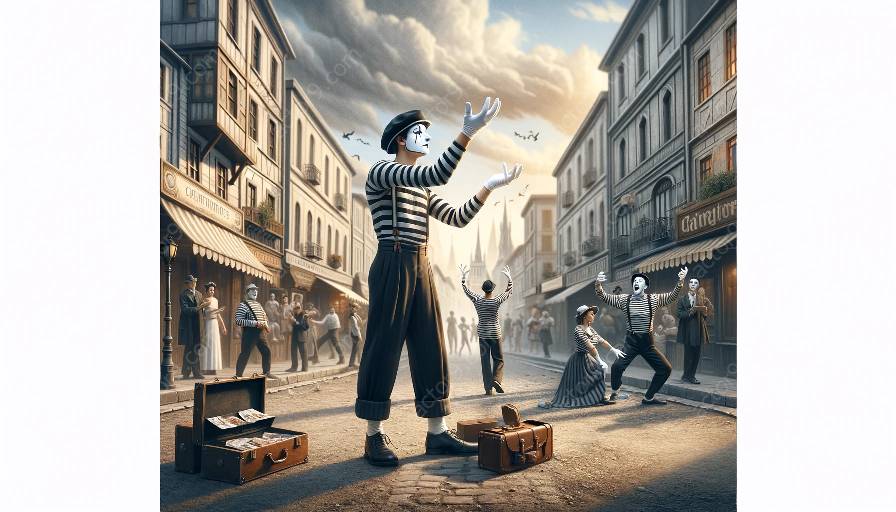Body language has always played a vital role in performing arts, especially in the realms of mime and physical comedy. Understanding the historical significance of body language in these art forms allows us to appreciate its impact on expressive communication and performance art.
Evolution of Body Language in Performing Arts
Throughout history, body language has been used as a form of communication and expression in various performing arts. In ancient civilizations, such as Greece and Rome, actors utilized body movements, gestures, and facial expressions to convey emotions and narratives on stage. This early use of body language laid the foundation for its significance in performing arts.
Body Language and Expression in Mime
Mime, as an art form, heavily relies on body language to communicate stories and emotions without using words. The use of exaggerated and precise movements, combined with facial expressions, allows mime performers to convey intricate narratives and connect with audiences on a profound level. Historical mime artists, such as Marcel Marceau, revolutionized the art form by bringing attention to the importance of body language in theatrical expression.
Mime and Physical Comedy
Mime and physical comedy are closely intertwined, with both relying on body language to create humor and engaging performances. Physical comedians, such as Charlie Chaplin and Buster Keaton, mastered the art of using their bodies to elicit laughter and convey complex emotions. Their work not only showcased the historical significance of body language in performing arts but also influenced generations of performers to harness the power of non-verbal communication.
Impact on Expressive Communication
The historical significance of body language in performing arts has had a profound impact on expressive communication. It has paved the way for performers to explore the unlimited potential of non-verbal expression, allowing them to connect with audiences across cultural and language barriers. Understanding the evolution and influence of body language in performing arts provides valuable insights into the human capacity for emotional and narrative communication through movement and expression.
Conclusion
Exploring the historical significance of body language in performing arts, particularly in relation to mime and physical comedy, enriches our understanding of its impact on expressive communication. The evolution of body language in performing arts has not only shaped the art forms themselves but has also contributed to the broader understanding of non-verbal communication and its significance in the human experience.


























